Collection of Coins of Cilicia Persica
|
Cilicia,
Tarsos AR Stater. Circa 440-400 BC. Horseman (Syennesis?) riding to
left,
wearing kyrbasia, holding lotus flower in right hand and reins in left,
bow in
bowcase on saddle; Key symbol below horse, [Aramaic 'TRZ'] in exergue /
Archer
in kneeling-running stance to right, quiver over shoulder, drawing bow;
Key
symbol behind, all within dotted border within incuse square. BMC -;
SNG von
Aulock -; SNG Copenhagen -; SNG Levante -; SNG France -; Casabonne -;
MIMAA -;
Traité II, 521, and pl. CVI, 1 = Hunterian, p. 546, 4 and pl.
LX, 7. 10.71g,
20mm, 9h.
'Syennesis' was the title held by the local Tarsiote dynasts of
Cilicia, at
least three of whom figured prominently in Near-Eastern history. The
first, an
independent monarch in his own right, joined with Nebuchadnezzar in
mediating
between Cyaxares of Media and Alyattes of Lydia in circa 610 BC. The
second appears
as a vassal of the Achaemenid king Darius I, and whose daughter was
married to
Pixodaros, son of Maussolos. He was perhaps the same man whom Herodotos
mentioned as one of the most distinguished of the subordinate
commanders in the
fleet of Xerxes I. The last recorded Syennesis participated in the
rebellion of
Cyrus the Younger against Artaxerxes II as described in detail in
Xenophon's
Anabasis. The lack of any further mention of this dynasty following the
events
of Cyrus' rebellion has long been taken as meaning that the syennesis
was
forcibly retired and a satrapy established in his place; the general
and
long-held acceptance by numismatists such as J. P. Six, E. Babelon and
C. M
Kraay of the obverse horseman portraying the Tarsiote syennesis has
therefore
complicated the dating of such issues (for an in-depth discussion see
Casabonne, Le syennésis cilicien et Cyrus : l'apport des sources
numismatiques,
1995). |
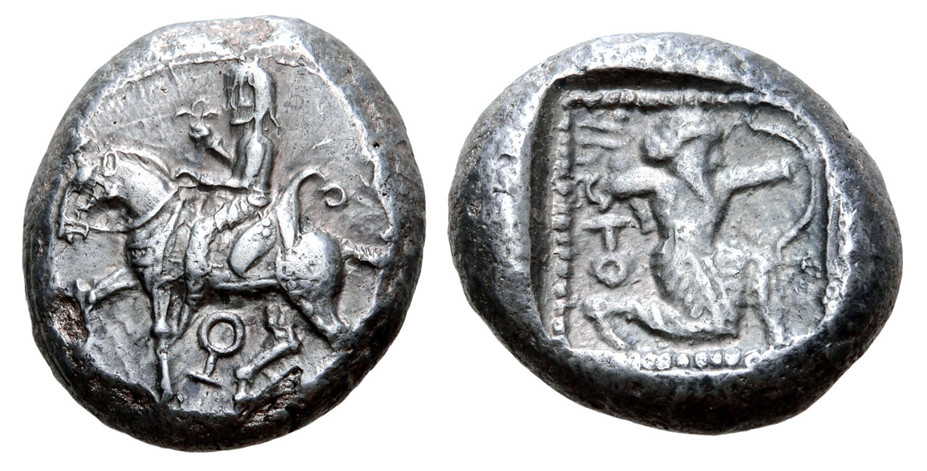 |
| SHH
v5989 |
| Horseman l., Lotus,
Gorytos / Monogramm // Archer r., quiver, bow / Symbol / Monogramm AR Tarsos 440-400 BC Hunterian p. 546/4 & pl LX /7 10.71 g 20 mm Roma Numismatics E61/312, 22.8.2019 |
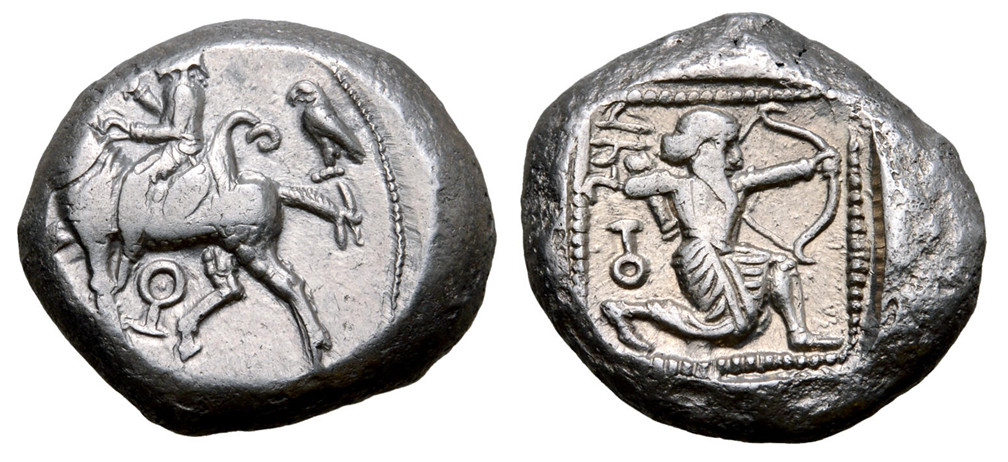 |
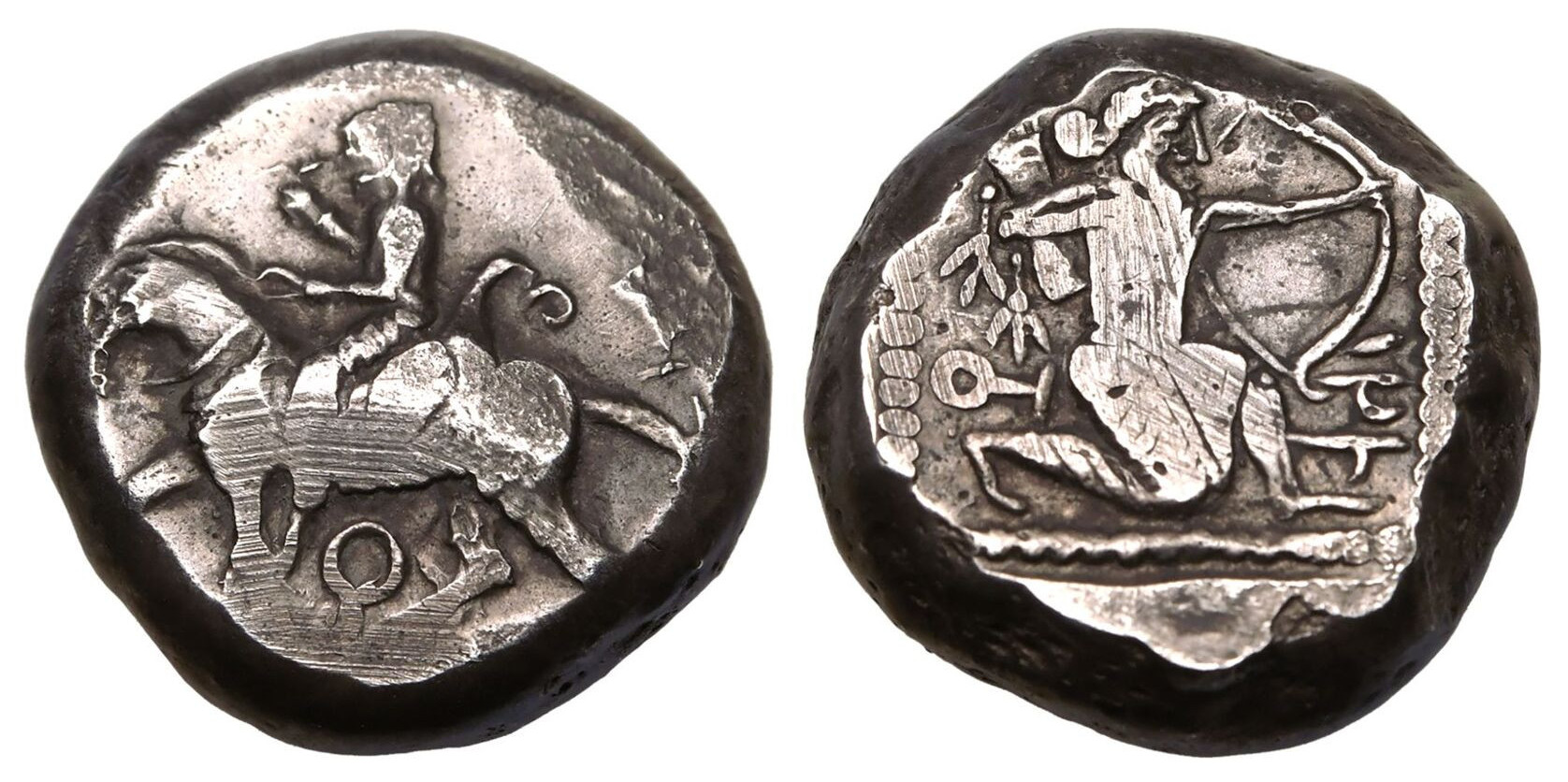 |
| SHH
v5991 |
SHH v5994 |
| v5991 Horseman l.,
Lotus,
Gorytos / Monogramm / Eagle // Archer r., quiver, bow / Symbol /
Monogramm AR Tarsos 440-400 BC Traite II 523 10.65 g 21 mm Roma Numismatics E79/351, 21.1.202 v5994 Horseman l., Lotus, Gorytos / Monogramm // 2x Lotus(?), Symbol / Archer r., Quiver, Bow / Inscription AR Tarsos 440-400 BC Müseler 9.6.5 10.95 g 18 mm The Coin Cabinett 25/22, 31.7.2025 |
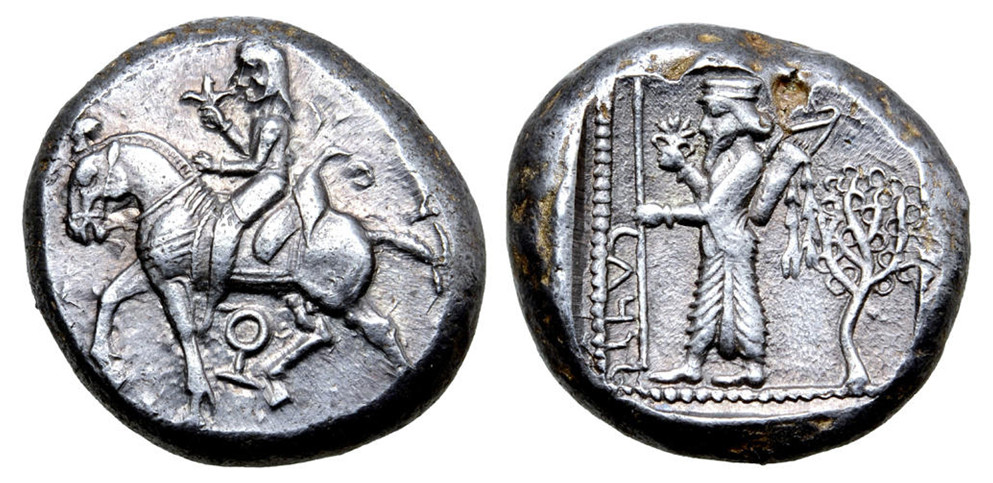 |
| SHH
v5990 |
| Horseman l., Lotus,
Gorytos / Monogramm // Inscription, King, Spear, Lotus, Gorytos /
Tree of Life AR Tarsos 440-400 BC France 213 10.66 g 20 mm Roma Numismatics 16/330, 26.9.2016 |
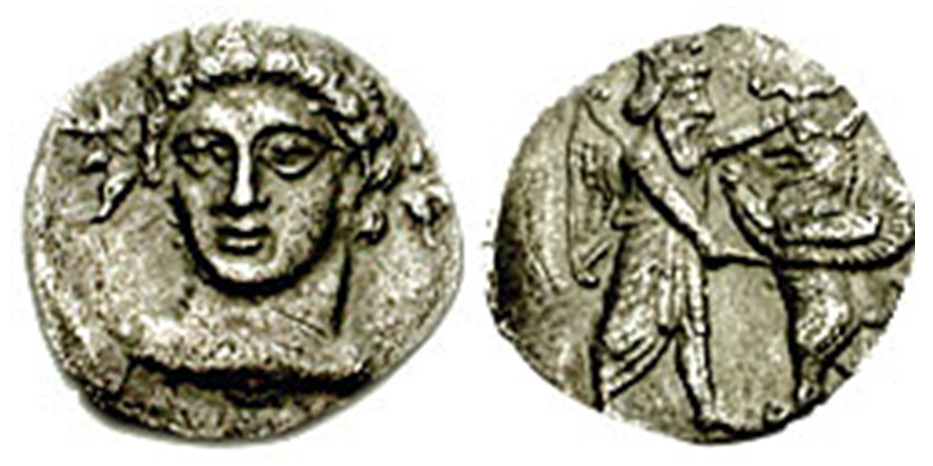 |
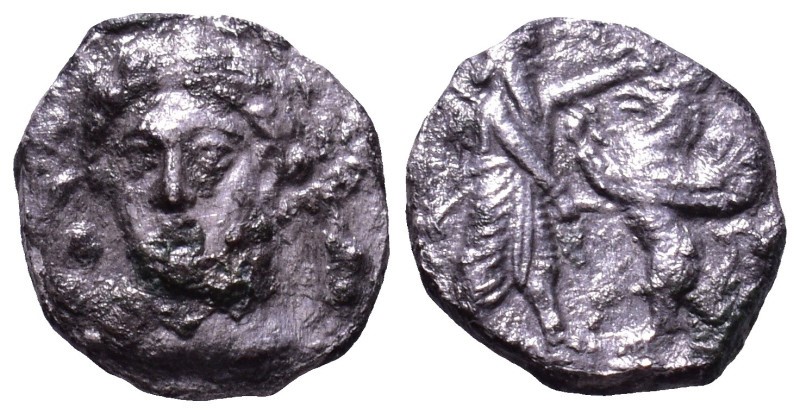
|
| SHH
v5992 |
SHH 7665 |
| Goddess // King r,
Bow & Quiver / Griffin, l AR Moneta Incerta 440-400 BC Göktürk 38 SHH v5992 0.71 gr CNG 70/362, 21.9.2005 |
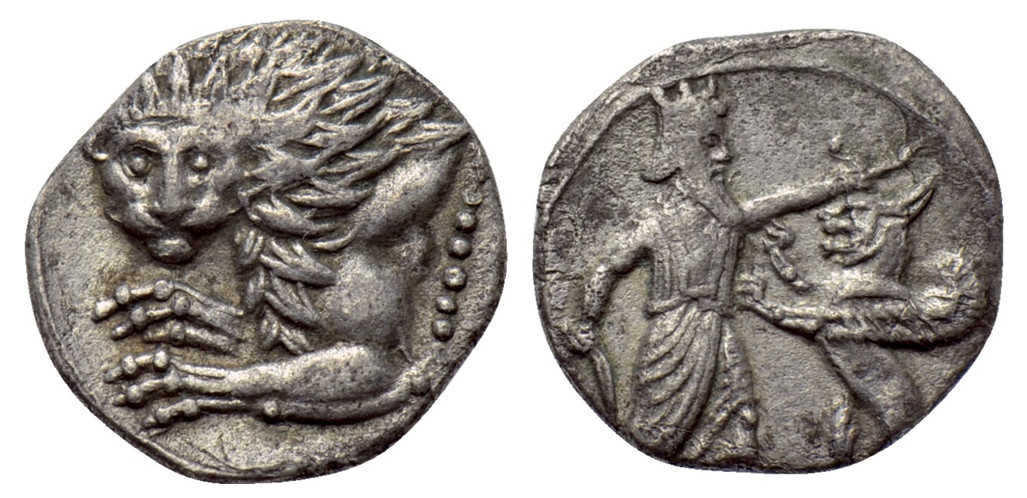 |
| SHH
v5993 |
| Lion l. // King r,
Bow & Quiver / Griffin l. AR Moneta Incerta 440-400 BC Göktürk 39; Levante 215. 2,88 gr 10 mm CNG 70/362, 21.9.2005 |
| |
